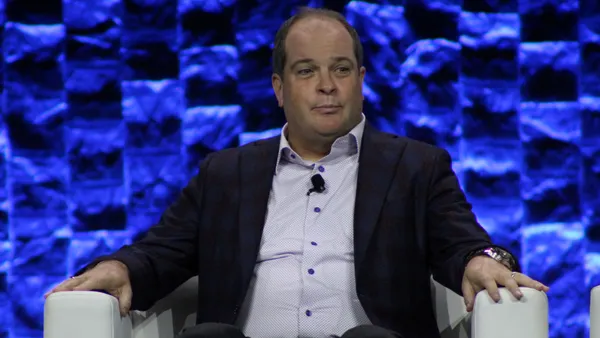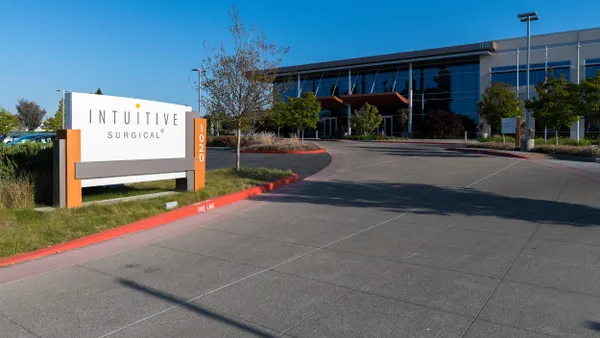Dive Brief:
- Senseonics has won FDA approval for its six-month continuous glucose monitoring system. Yet, the long-awaited approval was overshadowed by 2022 revenue guidance that was around half of what analysts expected.
- The approval gives Senseonics and partner Ascensia Diabetes Care a more convenient CGM implant to pitch as they seek to gain momentum in a market dominated by companies such as Abbott Laboratories and Dexcom, which make wearable devices that are worn for roughly 10 or 14 days depending on the product.
- Despite setting a second-quarter launch date for the new product, Senseonics expects little sales growth in 2022, with the bottom end of target guidance range only just beating the $13.7 million generated last year.
Dive Insight:
Senseonics identified longer sensor duration as a top priority for diabetics, leading it to pitch the switch from its existing three-month product to its six-month Eversense E3 CGM as a potential inflection point. With blood glucose monitoring player Ascensia signing up to sell the device in 2020, analysts hoped the six-month implant would benefit from commercial expertise.
The wait for evidence of whether Eversense E3 will improve Senseonics' fortunes has dragged on. Back in 2020, Senseonics expected to win approval in the first quarter of 2021 and bring Eversense E3 to market shortly thereafter. However, the timeline slipped throughout last year.
Senseonics now has its long-sought approval and a label that analysts at Craig-Hallum said matches their expectations. When the product launches in the second quarter, patients will be able to have a six-month CGM implant, giving existing Eversense users a longer wait between procedures and potentially making the offering more attractive to patients who currently use wearable patch sensors.
However, Senseonics does not expect the product to drive significant sales growth in 2022. The full-year guidance range is $14 million to $18 million, compared to the $13.7 million the company brought in last year. Analysts expected Senseonics to struggle to hit the upper reaches of the $30 million to $40 million it guided in 2020, but they were forecasting it to reach the bottom end of the range.
Craig-Hallum analysts called the down-revision "eye popping."
"Some change was expected given COVID delays, though we struggle to understand why the guide assumes zero growth at the low-end, particularly with a brand-new product approved, the pandemic abating vs. 2021 and Ascensia's partnership only just beginning," the analysts wrote in a note to investors. "If Ascensia is holding excess Eversense inventory (either OUS or U.S.) and refuses to purchase more until this inventory is burned down, it could partially explain the weaker guide."
The excess inventory theory is underpinned by a disconnect between the number of patients who are using Senseonics' devices and the company's revenues. As the Craig-Hallum analysts explained, installed patients fell from 5,000 at the end of 2020 to 3,200 at the end of 2021. Yet, sales rose from $5 million to $14 million, suggesting Ascensia has excess inventory.
BTIG analysts said sales in the first quarter are tipped to fall as Senseonics "works through remaining inventory and the required transition for payer contracts to start covering E3 with its longer wear time." The analysts expect "patients and prescribers to demonstrate reinvigorated interest in the Eversense E3 platform" but, with Senseonics needing to offer patient assistance programs and discounts throughout much of the year, that enthusiasm is unlikely to translate into significant sales growth in 2022.












